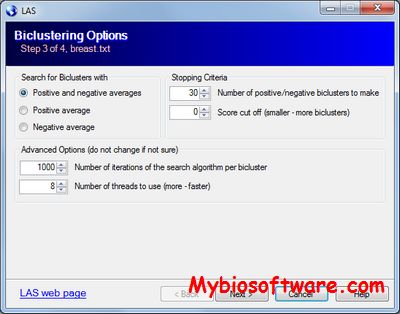ISA 1.0.0
:: DESCRIPTION
The ISA (Iterative Signature Algorithm) was designed to reduce the complexity of very large sets of data by decomposing it into so-called “modules”. In the context of gene expression data these modules consist of subsets of genes that exhibit a coherent expression profile only over a subset of microarray experiments. Genes and arrays may be attributed to multiple modules and the level of required coherence can be varied resulting in different “resolutions” of the modular mapping. Since the ISA does not rely on the computation of correlation matrices (like many other tools), it is extremely fast even for very large datasets.
::DEVELOPER
Computational Biology Group ,Department of Medical Genetics, University of Lausanne
:: SCREENSHOTS
N/A
:: REQUIREMENTS
- Windows / Linux / MacOS
- R package
- Bioconductor
:: DOWNLOAD
:: MORE INFORMATION
Citation
Phys Rev E Stat Nonlin Soft Matter Phys. 2003 Mar;67(3 Pt 1):031902. Epub 2003 Mar 11.
Iterative signature algorithm for the analysis of large-scale gene expression data.
Bergmann S, Ihmels J, Barkai N.



